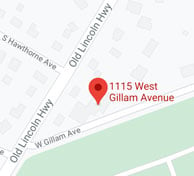If your HVAC system is more than 10 years old, you could be on the verge of facing significant challenges, especially if it’s 15 years or older. As HVAC technology advances and refrigerant regulations shift, waiting to upgrade could leave you dealing with high repair costs, limited parts availability, and inefficiencies. With the upcoming introduction of A2L refrigerants in 2025, the time to act is now.
3 Reasons You Should Upgrade Your HVAC System Now
Energy efficiency and cost savings
Older systems lose efficiency over time. HVAC units that are over a decade old, especially those nearing 15-20 years, often operate inefficiently, driving up your energy bills. Newer systems using R-410A refrigerant are not only more environmentally friendly, but also more energy-efficient. By upgrading now, you’ll see immediate improvements in performance and reduced energy costs, making the investment in a new system pay off faster.
The impact of refrigerant changes
Starting in 2025, the HVAC industry will phase out R-410A refrigerant in favor of new A2L refrigerants, such as R-32 and R-454B. These A2L refrigerants have a lower global warming potential (GWP), making them a more environmentally sustainable choice. However, switching to A2Ls comes with several challenges, particularly for homeowners with older systems.
Compatibility Issues
A2L refrigerants operate under different pressures and safety standards. Your old system, designed for R-410A or earlier refrigerants like R-22, may not be compatible with these new refrigerants, requiring significant upgrades or even a full replacement.
Higher Costs
While A2L refrigerants can be more efficient, the new systems needed to accommodate them come with a 12-22% increase in upfront costs due to safety features like leak detection systems and enhanced ventilation requirements.
Avoid technical problems and rising costs
One of the biggest risks of waiting to replace your old HVAC system is the technical issues that often arise during a transition to new refrigerants. When the industry shifted from R-22 to R-410A, many homeowners experienced problems like refrigerant leaks, coil failures, and reduced dehumidification. These challenges were largely due to the increased pressure in the new refrigerants and technicians adapting to the newer technology. With A2L refrigerants on the horizon, we can expect similar growing pains as the industry adjusts.
Additionally, as the shift to A2L refrigerants becomes more widespread, parts for older systems—particularly those that use R-22 or early R-410A systems—will become harder to find. This scarcity will likely lead to longer repair times and higher prices for replacement parts, making it more expensive to maintain an outdated system.
3 Paths for Homeowners
Replace now with R-410A
Upgrading to an R-410A system today means taking advantage of proven technology and efficiency that will serve you for another 15-20 years. You’ll avoid the increased costs and technical risks associated with A2L systems, all while enjoying better performance and savings on your energy bills.
Wait for A2L Refrigerants
If you’re eager to adopt the latest technology and reduce your environmental footprint, waiting for A2L systems may be an option. However, be prepared for higher upfront costs, potential technical hiccups, and a learning curve for technicians. Early adopters may also face higher repair costs if unforeseen issues arise with the new systems.
Do nothing
Some homeowners may choose to keep their existing system until replacement is unavoidable. While this approach may seem cost-effective in the short term, the risk of increasing repair costs, system failures, and skyrocketing energy bills makes it a gamble. Over time, the cost of maintaining an outdated system will likely exceed the savings from deferring an upgrade.
Secure Your Comfort and Savings Now
By replacing your old HVAC system with a new R-410A model now, you can ensure your home stays comfortable and efficient without worrying about the complications that come with A2L refrigerants. You’ll also avoid the risks of parts shortages and repair delays as older systems are phased out.
Don’t wait until your system fails and repair costs soar. Upgrade now and enjoy peace of mind with a reliable, efficient HVAC system that’s built to last for the next 15-20 years. Contact us today for a free estimate!
If you live in the Delaware Valley/Greater Philadelphia area and would like to find comfort within your home, visit our website or give us a call at 215 - 245 - 3200 to learn more.





